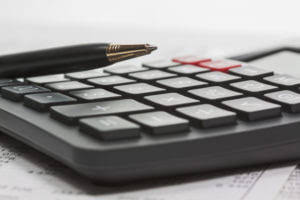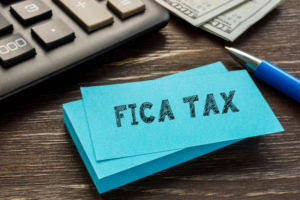
It’s important to be as detailed as possible so you can see where your money is at every moment. In this scenario, let’s consider the business purchasing a piece of equipment for $20,000 that has no salvage value and an estimated total production of 50 million units. The formula used to calculate depreciation will vary depending on the chosen method, which will also impact the expense amount that’s recorded. As previously mentioned, depreciation can provide attractive tax advantages. However, this does come with the tradeoff of a lower net income reported on the profit and loss statement. However, the various benefits that depreciation can provide often become clear to SMBs once their tax bill arrives.
What is depreciation? Types and examples
- This makes it easier to see how much money the asset is making compared to how much it costs, which gives you a better idea of how much the asset is helping the business.
- However, expenditures attributable to the enlargement of the building, elevators or escalators, or the internal structural framework of the building are excluded (Sec. 168(e)(6) and Regs.
- Depreciation methods for vehicles include the straight-line method or the 200% declining balance method.
- The 200% declining balance method accelerates deductions in the early years, while the straight-line method spreads them evenly.
- This misrepresentation affects financial ratios such as return on assets (ROA) and debt-to-equity, which investors and lenders use to assess financial health.
You also need to consider various depreciation deduction methods to maximize savings on your taxes. Depreciation deductions for HVAC systems are calculated using tax regulations and accounting principles. The General Depreciation System (GDS) applies to most properties, offering consistent deductions over the asset’s depreciable life. The 200% declining balance method accelerates deductions in the early years, while the straight-line method spreads them evenly. A company purchasing a $50,000 machine classified as 5-year property could claim higher deductions in the first few years using an accelerated method, improving short-term cash flow. Machinery and equipment used in business operations have varying recovery periods depending on their classification.
The impact of depreciation on business finances
- The delivery bike is a depreciable asset of the restaurant because its expected useful life is more than 12 months from its acquisition.
- ADS typically extends the depreciation period, offering a more conservative approach compared to MACRS.
- These adjustments determine depreciation deductions and affect capital gains calculations upon sale.
- Depreciation allows landlords to recover the cost of property improvements over time, influencing taxable income and cash flow.
- Under MACRS, real property typically has a 39-year recovery period, while personal property may have shorter periods of 5 or 7 years.
- Depending on the useful life of the asset, this means businesses could continue enjoying tax-related benefits on the purchase even several years later.
Bonus depreciation, set at 60% for 2024, provides income summary another option for immediate expensing. When HVAC systems reach the end of their useful life, businesses must address disposal or replacement with both financial and operational considerations in mind. For disposal, any remaining book value and tax implications must be accounted for. Fully depreciated systems can be written off without tax consequences, but systems with an adjusted basis may result in a gain or loss, depending on the disposal method and residual value. For partial upgrades, businesses should note components replaced, their costs, and whether they were classified as capital improvements or maintenance.

Know the difference: Depreciated vs. non-depreciated assets
This rule allows businesses to claim only half of the CCA rate in the first year an asset is acquired and in the year of disposition. Businesses must account for inventory using an appropriate valuation method, such as First-In, First-Out (FIFO) or Last-In, First-Out (LIFO), to determine taxable income. The choice of inventory accounting method affects financial statements and tax liability.

Proper classification is important, as misclassification can lead to incorrect deductions and IRS scrutiny. To use depreciation for tax purposes, it’s crucial to determine which properties qualify. According to the Internal Revenue Service (IRS), a property must be owned by the taxpayer and used for business or income-producing activity. The property must also have a determinable useful life, excluding land, which does not wear out or become obsolete. Residential rental properties typically have a useful life of 27.5 years under the Modified Accelerated Cost Recovery System (MACRS). Additionally, the property must be expected to last more than one year to qualify as a depreciable asset.

Asset Classification for HVAC
Properly distinguishing between inventory and depreciable assets ensures compliance with IRS regulations and accurate financial reporting. Businesses should distinguish between https://www.bookstime.com/articles/double-declining-balance-method land and depreciable improvements when acquiring property. Misclassifying land as a depreciable asset can lead to incorrect deductions and IRS adjustments. Properly allocating costs ensures compliance and maximizes allowable deductions.
Items Not Subject to Depreciation
The CCA rate for Class 14 property is 20%, providing businesses with a reasonable deduction for office equipment expenses. The expected value of depreciable assets towards the end of their useful lives is lower than their original cost to the business. Goods held for sale, or inventory, are not depreciable because they are not considered long-term assets.
- The straight-line method is commonly used for residential rental properties under MACRS.
- The choice of inventory accounting method affects financial statements and tax liability.
- Notably, this list does not include land, which is not considered a depreciable asset.
- While MACRS is the primary method for depreciating rental property improvements, certain circumstances may require alternative systems.
- While land is not depreciable, improvements such as parking lots, fences, and landscaping may qualify under a separate depreciation schedule.
- For example, if the depreciable basis is $275,000, the annual depreciation expense would be $10,000 ($275,000 ÷ 27.5 years).
However, it is treated as an expense in accounting records for tax-related purposes. Depending on the useful life of the asset, this means businesses could continue enjoying tax-related benefits on the purchase even several years later. But, the business will also record lower profits in the meantime because of it. Library books are depreciable assets with the exception of any rare books that are kept as an investment. I made the following infographic to explain to you the different types of non-depreciable assets in the context of a small vegetable farm.
Understanding the tax implications of dispositions and replacements is critical when navigating the what is depreciable property final stages of a property’s improvement lifecycle. This involves recognizing potential gains or losses from the disposition and adjusting the property’s basis accordingly. You can work with a firm like Windes that provides cost segregation services to maximize your savings with a cost segregation strategy for your short-term rental.